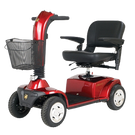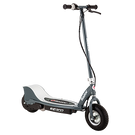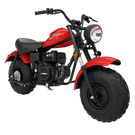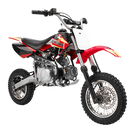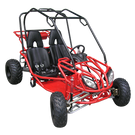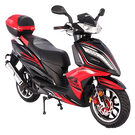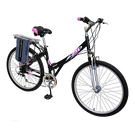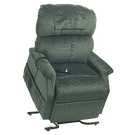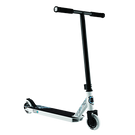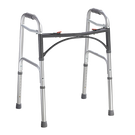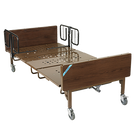FAQs
Ordering
I’m new to the Monster Scooter Parts site, where do I start?
I’m new to the Monster Scooter Parts site, where do I start?
There are several ways to find the part you require at Monster Scooter Parts. You can browse by part category, by scooter make and model, or by part title using our search box at the top right of each page. If you cannot find the replacement scooter parts required, we encourage you to contact us via our email, or phone. We are here to help. We make it easy to find your part at Monster Scooter Parts!
I’m concerned about giving Monster Scooter Parts my credit card. Can I trust your site to be secure?
I’m concerned about giving Monster Scooter Parts my credit card. Can I trust your site to be secure?
We are proud to be a member of the Yahoo! Shopping network, the most secure shopping network on the Internet. Yahoo! Shopping uses secure servers to protect your personal information, including your name, address, and credit card information. We use the Stronghold secure server, currently the second-best selling secure server software and, in our opinion, the best product technically. It supports industry-standard 128-bit SSL encryption.
When you enter your credit card number into the order form, it's transmitted across the Internet in an encrypted (scrambled) form and not decoded until we receive it. For added security, we also encrypt the credit card number when it is stored on disk and when we forward it to the merchant.
Shopping online is considered fairly low-risk. According to CNN, "The prevalent opinion is that online credit card use is actually no riskier for consumers than traditional 'low-tech' transactions." You should feel as safe as you would using a credit card in a store or restaurant, if not more so.
Technical
I have an electric scooter and have lost the battery charger. How do I know which replacement scooter parts to purchase?
I have an electric scooter and have lost the battery charger. How do I know which replacement scooter parts to purchase?
The best method of selecting the correct output battery charger is to follow the scooter manufacturer’s recommendations. However, often times the scooter manual is not available. In this case, a bit of investigating on the current scooter will need to be done. There are three specifications that are critical to the proper selection of a batter charger:
1. Connector Type
There are several different configurations of power output connector used in the scooter industry. Monster Scooter Parts strives to offer the widest selection of connectors available to meet our customer’s needs.
2. Output Voltage
The voltage used by your scooter is the output voltage needed on the battery charger. The output of the battery charger MUST match the voltage of the scooter. The voltage on the scooter batteries, controller, and motor will all be the same. 95% of the scooters in the industry are 24 Volt or 36 Volt. However, to be sure, you can either:
a. Count your batteries.
Scooter batteries are wired in series, which means that each individual battery voltage is added together to get the total scooter voltage. For example, most, but not all scooters use 12 Volt batteries. You should read the side of your current batteries to verify the actual voltage of your battery. If your scooter uses 12 Volt batteries, each battery adds 12 Volts to the total voltage of the scooter’s electrical system. Two 12 Volt batteries make a 24 Volt scooter, three 12 Volt batteries make a 36 Volt scooter, etc.
b. Read the label on your voltage controller or electric motor.
3. Output Amperage (Current)
Generally speaking, as the battery charger output increases, it also increases:
a. The speed of battery charging
b. The size of the battery charger
c. The cost of the battery charger
However, for best charging, the battery output should be matched with the correct size battery. If the batteries are large and the charger output is low, the batteries will take an excessive length of time to charge. Conversely, if the batteries are relatively small and the charger output is high, the batteries will overheat and be damaged, possibly exploding and/or leaking. Compiling the recommendations from multiple battery vendors as well as scooter manufacturers, the table below should be used as a guide when selecting the proper output amperage for a battery charger:
BATTERY SIZE (Ah) 3.5 – 679-10121831-35 (U1)50 – 55 (22NF)75110
OUTPUT CURRENT (Amps) 0.4 – 1.01.0 – 2.01.5 – 2.01.5 – 4.01.5 – 5.03.0 – 8.05.0 – 8.08.08.0
What is the "Amp Hour Rating" that is used on sealed lead acid scooter batteries?
What is the "Amp Hour Rating" that is used on sealed lead acid scooter batteries?
The Amp Hour (Ah) rating used in the Sealed Lead Acid (SLA) battery industry is based on a rating over 20 hours. The 20 hour Ah rating is how much amperage (current) the battery can output continuously, evenly, over the 20 hour time period.
The 20 hour Ah rating must be divided by 20 in order to determine how many amps the battery can produce over that time period. A battery with an Ah rating of 12 can produce:
12 Ah / 20 = 0.6 amps
A 12 Ah rated battery can produce 0.6 amps for 20 hours before dropping to 10.5 volts, which is the level that a 12 Volt battery is considered fully depleted and “dead”.
Using the Amp Hour Rating to Estimate Use Time in Electric VehiclesAn estimate of ride time can be made, and a comparison of each ride time by battery size, if the motor voltage and size is known. Example, if a scooter is equipped with a 24 Volt 500 Watt motor:
Power (Watts) = Voltage x Current (Amps)
For purposes of the estimate, it can be assumed that the motor will be run at full throttle, and therefore the maximum amps will be drawn at all times:
500 Watts = 24 Volts x (Amp Draw)
Amps = 20.8 amps
Ride time for a 12ah battery pack:
12 ah / (Ride Time) = 20.8 amps
Ride Time = 0.58 hours = About 35 minutes
Ride time for a 10ah battery pack:
10 ah / (Ride Time) = 20.8 amps
Ride Time = 0.48 hours = About 29 minutes
Ride time for a 7ah battery pack:
7 ah / (Ride Time) = 20.8 amps
Ride Time = 0.37 hours = About 20 minutes
Taking all of the formulas above and putting them together for a Ride Time estimate:
Ride Time (in minutes) = (Ah Rating x Scooter Voltage x 60) / Size of Motor in Watts
This is a useful drill to estimate the relative differences in use time between battery sizes with different Ah ratings. It is not a particularly accurate estimate of true ride time. During normal use, the motor is typically not run at full throttle for the full course of the ride. Rider weight and terrain will also have significant affects of the amp requirements of the motor and length of ride.
How do I test my 12 volt battery cell, and how do I know if it should be replaced?
How do I test my 12 volt battery cell, and how do I know if it should be replaced?
We recommend you charge your battery with your regular battery charger and let the battery sit for an hour prior to testing. A 12 volt sealed lead acid battery can be tested with any standard multimeter or voltmeter equipped with a digital output. Attach the meter’s leads directly to the positive and negative terminal of the battery cell, and test the direct current voltage (or "potential") of the battery.
Compare the voltage reading to the below table to determine the status of your battery. Any 12 volt battery cell below the level of 11.90 volts is considered fully depleted and should be replaced immediately.

How do I determine if my mobility scooter or power chair onboard battery charger is working?
How do I determine if my mobility scooter or power chair onboard battery charger is working?
Pride Mobility onboard chargers have a 3 pin 24 volt output connector. This connector is translucent in color and has a round center pin and two D-shaped outside pins. (See image below).
Plug your 115 AC power cord into a wall outlet and charge your scooter as per your standard battery charging procedures. Remove the output connector from your scooter's wiring harness and measure the voltage across the pins with a multimeter.
There should be 24 VDC output when voltage is measured across the following pins (see image below):
- Outer D-shaped pin to outer D-shaped pin
- Lower D-shaped pin to center pin

An alternative (and somewhat simpler) method of identifying a bad onboard charger is if the power indicator light does not light up when attempting to charge the scooter or power chair. Verify that your circuit breaker is not tripped and is functional if your charger shows no signs of life. If power is going to the battery charger and the indicator light is off, your onboard battery charger needs to be replaced. Monster Scooter Parts carries genuine OEM replacement scooter parts from Pride Mobility.
What happens if I overcharge my battery?
What happens if I overcharge my battery?
You should never allow your battery to overcharge. Overcharging will not only ruin your battery, it is dangerous as well. Using the wrong charger, running a car charger set to the Boost or Jump setting, or just leaving a battery charger running on a continuous charge over night will cause the the plates inside the battery to degrade and lose the ability to hold a charge.
A scooter battery that has been severely overcharged can often be identified by its warped and bulged plastic casing caused by the pressure from dangerous explosive hydrogen gas. A battery in this condition is vulnerable to a stray spark from the running charger, (or even from static electricity), exploding the gas and splattering the sulfuric acid and lead shrapnel.
Never use a high-rate booster charge designed for cold-starting automobile batteries. The best, and safest, charger for your scooter's batteries is a 5.0 and under trickle charger with automatic cut off.
What is the correct fuel/oil mixture for 2-stroke scooter engines?
What is the correct fuel/oil mixture for 2-stroke scooter engines?
The majority of Chinese made 2-stroke scooter engines of size 33cc through 52cc use a fuel oil mixture ratio of 25:1 or 30:1, meaning 25 parts fuel to 1 part 2-stroke oil. The 49cc scooter engines sold at Monster Scooter Parts have a recommended ratio of 25:1.

